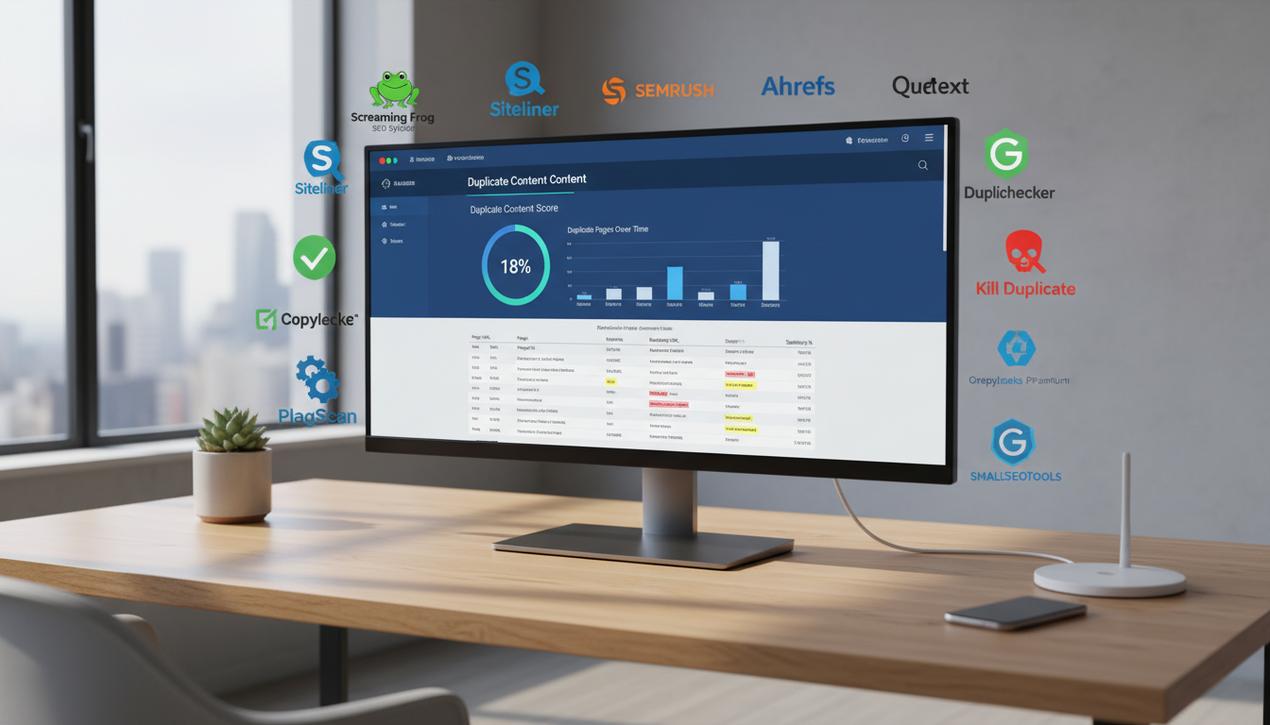The 13 Best Alternatives to Outlook in 2025


In a world where over 376 billion emails are exchanged daily, effective email management has become a cornerstone of professional productivity. Microsoft Outlook, thanks to its historic integration into the Windows ecosystem, has long dominated this landscape. However, in 2025, many professionals and businesses are questioning this dominance. Between a costly subscription model via Microsoft 365, sometimes inconsistent performance on other platforms like macOS, and an interface that can feel cluttered, the reasons for seeking an Outlook alternative are plentiful. Furthermore, user expectations have evolved. Today, users demand AI-driven smart features, smoother collaboration, and, crucially, better privacy protection. The market has responded with a host of innovative solutions, from robust open-source email clients to collaborative platforms that are reinventing how we communicate. This comprehensive guide explores 13 of the most effective alternatives to Outlook, helping you find the perfect tool for your workflow.
Why Look for an Outlook Alternative Today?
While Outlook remains a powerful tool, several key factors are driving users to explore other options. Understanding these friction points is the first step toward choosing a replacement that will genuinely meet your needs.
The Cost of the Microsoft 365 Ecosystem
The era of Outlook as a standalone software purchase is largely over. Today, it’s primarily accessed through a Microsoft 365 subscription. While this suite offers a wide array of tools, its cost can be a significant barrier for freelancers, small businesses, or SMEs that don’t need every application included. Many alternatives offer powerful free versions or more affordable, targeted subscription plans.
Cross-Platform Performance and Compatibility
Historically designed for Windows, Outlook doesn’t always deliver the same smooth experience or feature set on macOS or Linux. Likewise, its web application, though improved, doesn’t always match the experience of a dedicated desktop client. Professionals who work across different operating systems need a solution that is consistent and high-performing everywhere.
The Need for Modern Features: AI and Collaboration
The trend in 2025 is toward “smart” email. Users now expect AI-assisted features like automatic email sorting, conversation summaries, writing assistance, and intelligent scheduling. Moreover, the lines between email, chat, and task management are blurring. Tools that natively integrate these collaborative functions offer a significant productivity boost.
The Quest for Privacy and Data Sovereignty
Data privacy is a paramount concern. Many companies and individuals are increasingly hesitant to entrust their communications to US-based tech giants. European alternatives, especially from Switzerland and Germany, that offer end-to-end encryption and strict privacy policies are rapidly gaining traction.
Versatile and Open-Source Alternatives
For those seeking a complete, free, and customizable solution, open-source email clients remain a reliable choice. They offer full control over your data and great flexibility.
1. Thunderbird
Developed by Mozilla, Thunderbird is arguably the most famous open-source alternative. After a period of slower development, the project has experienced a renaissance with regular updates that are modernizing its interface and features. It supports POP and IMAP protocols, offers robust phishing protection, and a convenient tab system. Its greatest strength lies in its vast library of add-ons, which allow for deep customization and the addition of advanced functions like calendar integration (Lightning) or PGP encryption.
2. eM Client
If you appreciate Outlook’s aesthetic and organization but want a lighter, more modern alternative, eM Client is an excellent choice. Its interface is clean and intuitive, and it offers impressive compatibility with most email services (Gmail, Exchange, iCloud). It also integrates a calendar, task and contact managers, and a chat feature. Its tool for importing directly from Outlook is particularly effective, making the transition nearly seamless. A generous free version is available for up to two email accounts.
3. Mailspring
Mailspring positions itself as a modern and elegant email client, compatible with Windows, macOS, and Linux. Its interface is clean and fast. It stands out with advanced productivity features, even in its free version, such as a unified inbox, support for multiple accounts, and powerful search capabilities. The Pro version unlocks powerful tools for professionals: read receipts, link tracking, response templates, and enriched contact profiles.
4. Zimbra Desktop
Zimbra is a complete collaborative suite that offers an open-source desktop client. It’s designed to work both online and offline, synchronizing your emails, contacts, calendars, and documents. It’s a robust solution for those managing multiple accounts and needing an all-in-one platform. Its interface, while less modern than some others, is functional and efficient.
5. Seamonkey
More than just an email client, Seamonkey is an all-in-one internet application suite inherited from the original Mozilla Application Suite. It integrates a web browser, an email and newsgroup client, an HTML editor, and an IRC chat client. It caters to a niche audience, often developers or advanced users who appreciate having all these tools bundled into a single, lightweight, open-source application.
Productivity and Collaboration-Focused Platforms
These tools go beyond simple email management to become true communication and productivity hubs for teams.
6. Google Workspace
It’s impossible not to mention Gmail, Outlook’s main competitor. Through Google Workspace, Gmail is transformed into a powerful professional tool. An ad-free experience, custom email addresses, and generous storage are the basics. Its real strength lies in its seamless integration with the Google ecosystem: Drive, Calendar, Meet, Docs, and more. AI features like Smart Compose and priority filtering significantly enhance productivity.
7. Mailbird
Mailbird is designed to be the command center for all your communications. Its key advantage is its ability to unify not only all your email accounts but also dozens of third-party applications. You can integrate WhatsApp, Slack, Twitter, Google Calendar, Asana, Dropbox, and many others directly into the Mailbird interface. This allows you to centralize your work and reduce the time spent switching between apps.
8. Spike
Spike reinvents email by turning it into a chat-like conversation. It strips away headers, signatures, and clutter to present your emails as simple chat bubbles. This “conversational email” approach makes exchanges more fluid and faster. Spike also integrates collaborative notes, a task manager, and audio/video calls, making it an excellent tool for team collaboration.
9. Postbox
Postbox is aimed at “power users” who manage a high volume of emails. Its strengths are its lightning-fast search engine and advanced organizational tools. It allows you to group messages by contact, assign tags, create smart folders, and use powerful filters. Its interface is designed for maximum efficiency, with focused views to see only attachments, images, or links.
Security and Privacy-Centric Solutions
For those whose absolute priority is data protection, these solutions offer end-to-end encryption and European data hosting.
10. Proton Mail
Based in Switzerland, Proton Mail is the gold standard for secure email. It uses end-to-end encryption, meaning that no one other than you and your recipient can read your emails. The company has a “zero-knowledge” policy, so even they cannot access your messages. The Proton ecosystem also includes a VPN, Calendar, and Drive, all built with a privacy-first mindset.
11. Infomaniak Mail (kMail)
Also hosted in Switzerland by a leading European cloud provider, Infomaniak’s email service is a sovereign and ethical alternative. It guarantees your data is stored in Europe in eco-friendly data centers. The service is comprehensive, with contact and calendar synchronization, effective spam filtering, and a full collaborative suite (kSuite) that includes cloud storage and online meeting tools.
12. Tutanota
A direct competitor to Proton Mail, Tutanota is a secure email service based in Germany, a country with some of the world’s strictest privacy laws. It goes a step further than some rivals by encrypting not only the body of emails but also the subject line and your contacts. Its code is open source, allowing for full transparency of its security mechanisms. It offers dedicated apps for all platforms, ensuring a secure experience on the go.
13. Spark Mail
While not strictly a privacy-first provider like Proton, Spark (by Readdle) focuses heavily on productivity with a smart, modern interface. Its “Smart Inbox” automatically sorts incoming mail into categories like personal, notifications, and newsletters, helping you focus on what’s important. It also includes excellent team features, such as the ability to draft emails together, comment on threads privately, and delegate emails to colleagues. It’s a great choice for teams looking to make their email workflow more efficient.
The perfect email client doesn’t exist; the best choice depends entirely on your priorities. Whether you’re an open-source enthusiast seeking flexibility (Thunderbird), a professional looking to maximize productivity (Mailbird, Spark), or a business concerned with data privacy (Proton Mail, Tutanota), the 2025 market offers an Outlook alternative for every need. Don’t hesitate to take advantage of free trials to test these tools and find the one that will truly transform your email management into a strategic asset.




